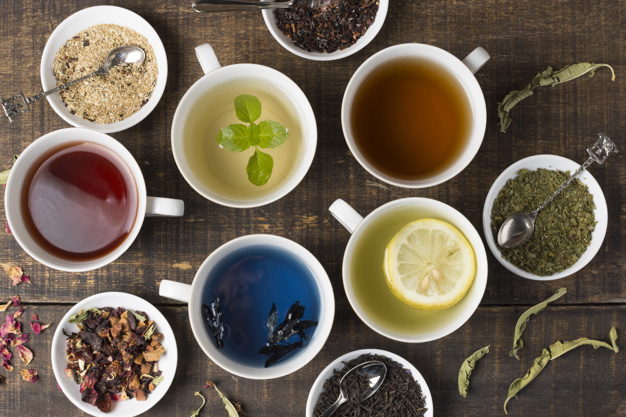- Barley Tea
Barley tea enjoys the most popularity in the East, and it’s a staple drink in China, Japan, and Korea. The drink is prepared by toasting barley and then boiling it for approximately 20 minutes. Regarding flavour, it tastes nutty, smoky and slightly bitter. There is very confined research on the potential health effects of the drink.
2. Green Tea
Another true tea, and one which has various evidence-based health benefits. Green tea originated in China where it has been popular for millennia. While black tea is the popular choice in the Western world, green tea dominates the East, particularly in Japan. There are various kinds of green tea. The more popular kinds involve sencha, genmaicha, and matcha. Green tea is very healthy, Green tea Face pack to glow your skin and it is one of the most research-backed foods/drinks in the world
3. Chai Tea
Chai is a blend of black tea, steamed milk, and several Indian herbs and spices. These spices typically mix cinnamon, cardamom, cloves, and ginger, among others. Depending on the particular tea and spices used, the flavour of chai tea can differ quite a lot. However, it’s usually creamy, a little spicy, and it has a warming feeling while sipping it. That said, the health benefits of chai tea can be either positive or negative depending on where you drink it. A style of chai tea is relatively healthy. Chai tea will provide much of the identical benefits as black tea, with the high polyphenol content of the spices a bonus.
4. Chamomile Tea
Chamomile tea originates from the edible flowers of the Matricaria chamomilla plant, otherwise known as chamomile. This particular drink has a reputation for being a good bedtime beverage, and companies claim it helps to relax our body. It is one of the most popular varieties of tea and it pairs a mild bitterness with a light, floral, and slightly sweet taste.
5. Chrysanthemum Tea
Chrysanthemums are flowering plants found in East Asia, and we can largely find them in China. The flowers of this variety of plants can differ in colour, but they are safe and we can grow their leaves to make chrysanthemum tea. Like all flower teas, chrysanthemum has a floral aroma alongside a light and slightly sweet flavour.
6. Black Tea
Made with the leaves of the Camellia sinensis plant, Black Coffee black tea is a true tea. It’s also one of the most beloved drinks in the world, especially so in Great Britain and Ireland. Brits consume approximately 165 million cups of black tea every single day. Due to the somewhat bitter and astringent taste, many enjoy the drink together with a small quantity of milk.
7. Chaga Tea
Many mushrooms have curative properties, but have you ever tried mushroom tea? If not, you may need to look into Chaga mushroom tea. Chaga mushrooms are a kind of fungus that grows on birch trees, and making them into tea just requires boiling a piece of the dried mushroom. It is a simple everyday drink in Siberia, and people consider it has important health and endurance benefits.
8. Essiac Tea
Essiac tea is a conventional drink of the Ojibwa, a North American Indian tribe also recognised as the Chippewa. It has a slightly bitter, grassy kind of flavour. It’s not a tea I’d call enjoyable, but it doesn’t taste too bad either. The big claim about this tea is that it can help to treat cancer. A quick look at the evidence shows that the tea has anti-inflammatory and DNA-protective characteristics.
9. Hibiscus Tea
Otherwise known as Agua De Jamaica, hibiscus is a tea made from the dried petals of the roselle flower. Resembling the flower’s colour, hibiscus tea is a dark blood-red, and it has a tart flavour and an elegant smell. One of the purposes for the sour taste is the high acid content of hibiscus, with the tea containing malic, tartaric, citric, and ascorbic acids. The composition of hibiscus tea is 24% acidic. Hibiscus supplies some decent nutritional properties too, and it is a good source of vitamin C and a variety of anthocyanin polyphenols.
